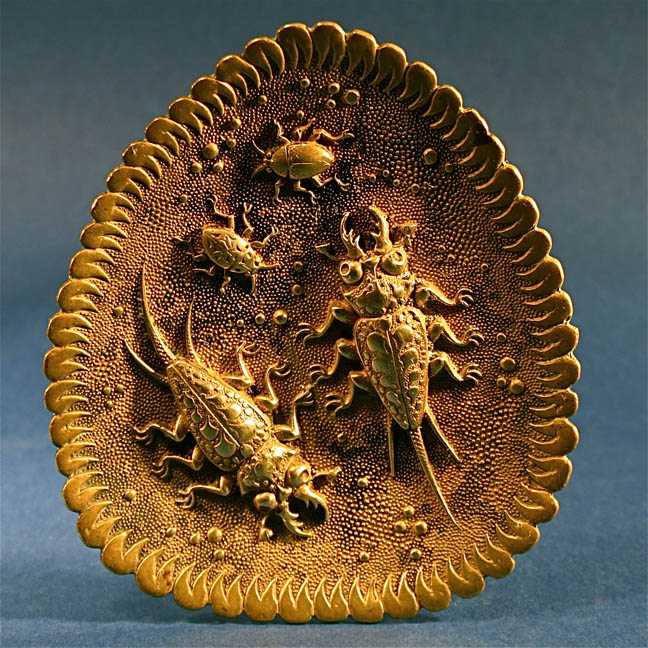

Title: Rare Antique Victorian Brass Ashtray Display Embossed Bug Art Dish
Shipping: $9.00
Artist: N/A
Period: 19th Century
History: N/A
Origin: Central Europe > France
Condition: Museum Quality
Item Date: 1870 to 1915
Item ID: 5034
A wonderful antique rare brass dish, at least circa 1900. The bugs are lounging on a lotus leaf. It has a very Art Nouveau look but Victorians loved their nature inspired designs as well so if falls somewhere between those two time periods. Very detailed and in perfect condition. Elaborate and fascinating embossed oval brass plaque or dish. The embossing represents a scene with bugs as the central focal point. Each directional point has an embossed design and four large bugs within. This dish is solid brass with some aged black patina. The embossing has amazing detail. This unique piece is very rare. There are no dings, bends, or repairs to this beautiful piece. It has nice detail and a nice patina. A truly unique looking piece for the high end collector!
Link: http://en.wikipedia.org/wiki/Brass
Although forms of brass have been in use since prehistory, its true nature as a copper-zinc alloy was not understood until the post medieval period because the zinc vapor which reacted with copper to make brass was not recognised as a metal. The King James Bible makes many references to "brass". The Shakespearean English form of the word 'brass' can mean any bronze alloy, or copper, rather than the strict modern definition of brass. The earliest brasses may have been natural alloys made by smelting zinc-rich copper ores. By the Roman period brass was being deliberately produced from metallic copper and zinc minerals using the cementation process and variations on this method continued until the mid 19th century. It was eventually replaced by speltering, the direct alloying of copper and zinc metal which was introduced to Europe in the 16th century.
In West Asia and the Eastern Mediterranean early copper zinc alloys are now known in small numbers from a number of third Millennium BC sites in the Aegean, Iraq, the United Arab Emirates, Kalmikia, Turkmenistan and Georgia and from 2nd Millennium BC sites in West India, Uzbekistan, Iran, Syria, Iraq and Palestine. However, isolated examples of copper-zinc alloys are known in China from as early as the 5th Millennium BC.
The compositions of these early "brass" art objects are very variable and most have zinc contents of between 5% and 15% wt which is lower than in brass produced by cementation. These may be "natural alloys" manufactured by smelting zinc rich copper ores in reducing conditions. Many have similar tin contents to contemporary bronze artefacts and it is possible that some copper-zinc alloys were accidental and perhaps not even distinguished from copper. However the large number of copper-zinc alloys now known suggests that at least some were deliberately manufactured and many have zinc contents of more than 12% wt which would have resulted in a distinctive golden color
By the first century BC brass was available in sufficient supply to use as coinage in Phrygia and Bithynia, and after the Augustan currency reform of 23 BC it was also used to make Roman dupondii and sestertii. The uniform use of brass for coinage and military equipment across the Roman world may indicate a degree of state involvement in the industry, and brass even seems to have been deliberately boycotted by Jewish communities in Palestine because of its association with Roman authority.